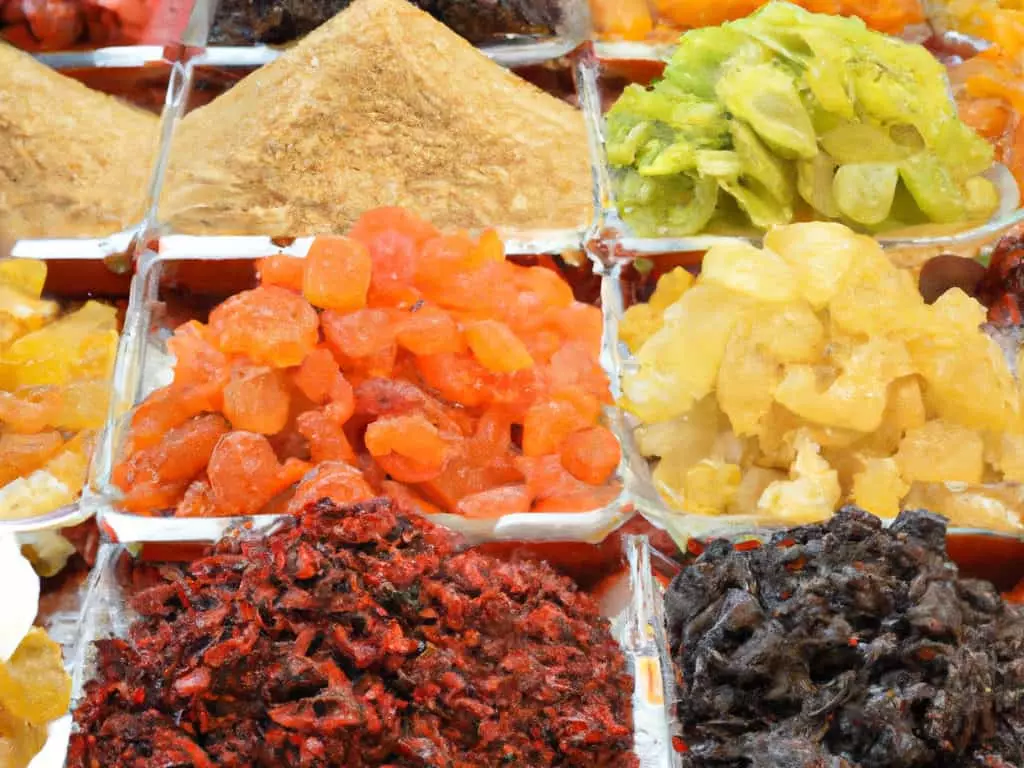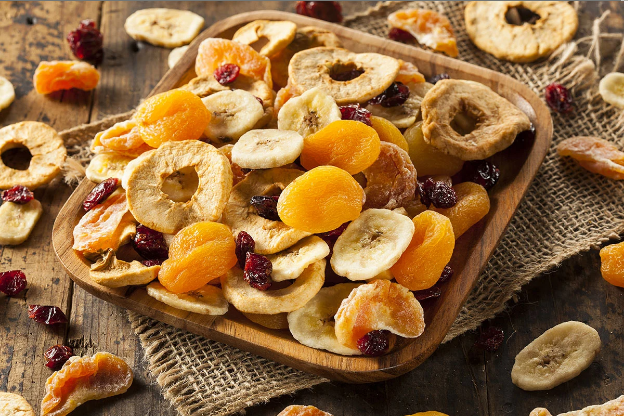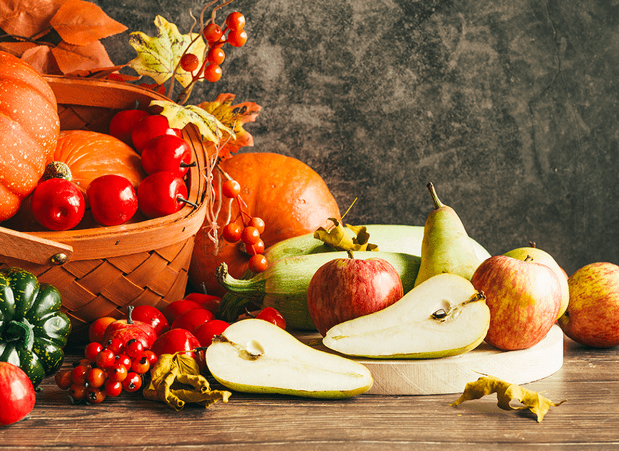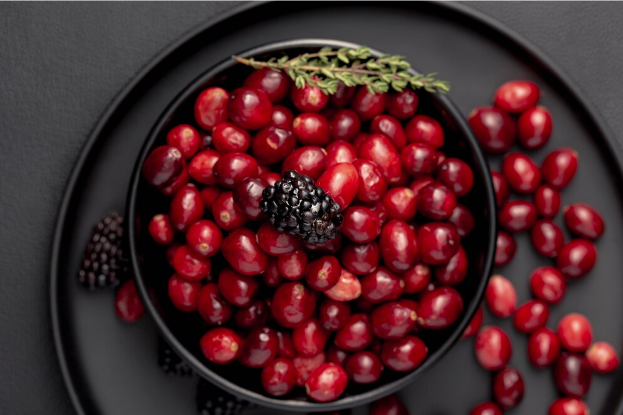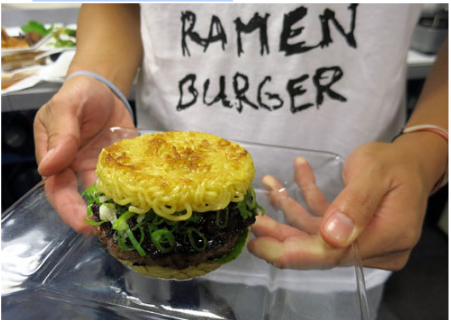Your cart is currently empty!
Bottled, Crystallized, And Dried Fruits
Types Of Dried Fruits
Dehydrating fruits is a great way to expand their shelf life. Plenty of good nutrition is available in dried fruits. The fruit’s natural sweetness becomes more intense when dried, so they are good for adding sweetness to many dishes. The best-dried fruits are those that have been sun-dried without undergoing any added chemicals.
Dried Grapes
The best raisins are made from Muscat grapes and originate from Spain or California. These large, deep amber fruit are tender and sweet. They can be eaten independently, with cheese or nuts, or used in rice and couscous dishes.
Smaller black raisins are useful for making cakes and puddings, muesli (granola), and mincemeat. All raisins benefit from plumping in brandy or other liquids, such as orange juice, before cooking.
Dried Currants
These small dry fruits are made from Turkish and Greek seedless black grapes.
Dried Sultanas/Golden Raisins
More golden-colored raisins are Sultanas. Made from seedless white grapes. They are deliciously moist, with a tender texture and delicate flavor.
Dried Prunes
These are dried purple or red plums. The plums can be left to dry naturally on the tree but are more often sun-dried. The finest variety of pruning plum is the Agen, which is grown in France and California. These dried prunes are sold complete with stones (pits) and must be soaked overnight before being cooked.
Today, stoned (pitted) ready-to-eat prunes are widely available but tend to be flabbier than the traditional variety. Apart from their famed laxative qualities, prunes have other healthful properties. They are said to be a cure for hangovers. They give a great energy boost and are purported to be an aphrodisiac.
Prunes are delicious and served with hot custard, but they are equally good with thick cream. They make excellent ice cream, especially with an additional splash of French Armagnac. Prunes are often used in savory dishes, particularly Middle Eastern cooking, which go well with pork and chicken.
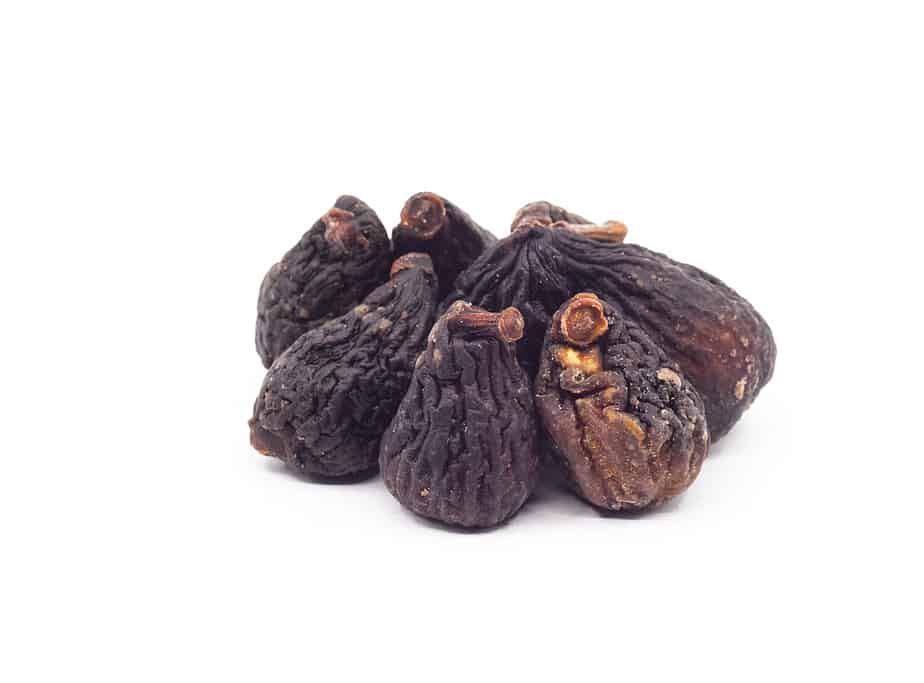
Dried Figs
These are made from very ripe autumn (fall) fruits, usually Golden Calimyrna Figs or deep purple-looking Black Mission Figs from Turkey. They are spread out on hurdles to dry in the sun and must be turned several times before completely drying. This process flattens the figs into a cushion shape. Dried figs contain large quantities of sugar and other nutrients.
The best have a soft texture. Less high-quality dried figs are sold in blocks or strung together like a necklace.
Store them in a cool, dry place. Eat dried figs as they are, or stuff them with marzipan, nuts, or a cream cheese filling. They can be used in compôtes, poached in wine, or served with creamy custard puddings. They can be baked in cakes, steamed puddings, and tea breads. Figs are extensively used in Middle Eastern cooking, especially with poultry or game.
They can also be substituted for prunes in chicken, pork, and rabbit recipes such as in terrines, stews, and casseroles. Soak them – preferably in red wine – for several hours to rehydrate before cooking.
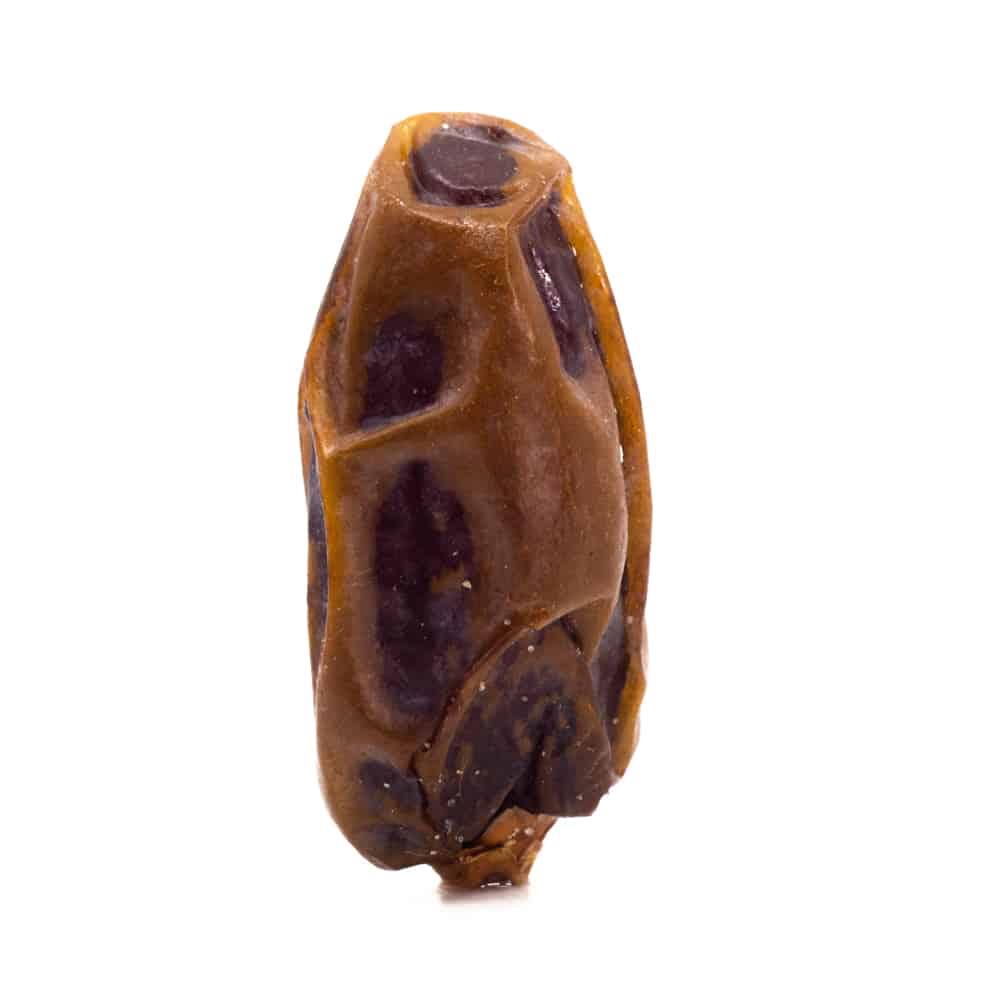
Dried Dates
Sticky, sweet, dried dates may be packaged whole in a long, narrow box or pressed into blocks. Since the advent of widely available fresh dates, the popularity of dried dates has declined.
Some Chinese and Asian supermarkets stock tiny, wrinkled red dates and smoky black dates with the flavor of a bonfire, which are only suitable for cooking. Semi-dried dates are sold in clusters on the stem. They have wrinkled skin, a chewy texture, and a wonderful flavor with a balanced sweetness.
Dried dates will keep for months, but do not store them near strong-smelling foods such as onions as they readily absorb odors. Sorbic acid or potassium sorbate is sometimes added to dried dates and figs as a preservative to help stop them from becoming moldy.
Dried dates make an excellent addition to moist fruit cakes, hot sticky puddings, and fresh fruit salads, and they combine very well with nuts, particularly walnuts and almonds. They should be stoned (pitted) and chopped when cooking with dates.
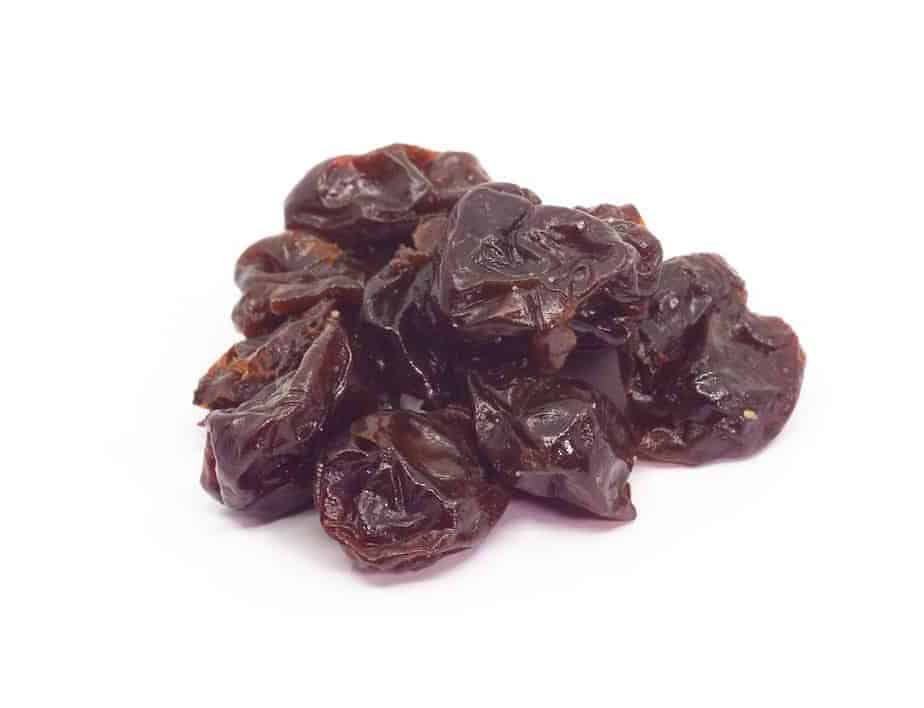
Dried Cherries
These can be made from sweet or sour cherries. Dried sour cherries are popular in the United States. Rich browny-red and have a sweet-sour flavor. Additionally, they can also be used in muffins, desserts, and sauces for meat.
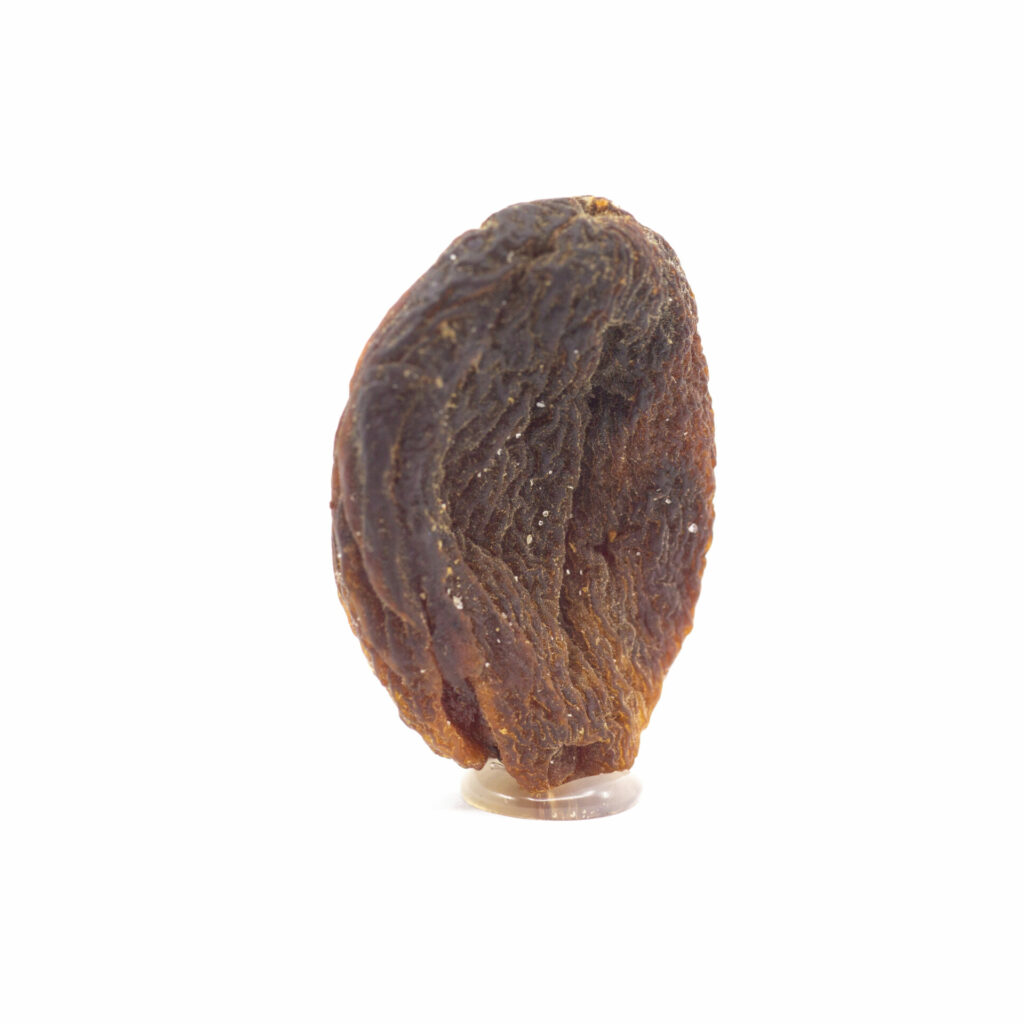
Dried Apricots
The best-dried apricots come from Turkey, where they add sulfur to give the apricots a burnished orange and rich flavor. All dried apricots are wonderfully tart, which makes them an excellent addition to sweet desserts and compôtes and to a range of savory dishes where a sweet-sour flavor is required. Use them just as they are in slow-cooked dishes that contain plenty of liquid. Semi-dried apricots don’t need soaking. Fully dried apricots should be soaked in warm water for a few hours before being used in sweet dishes.
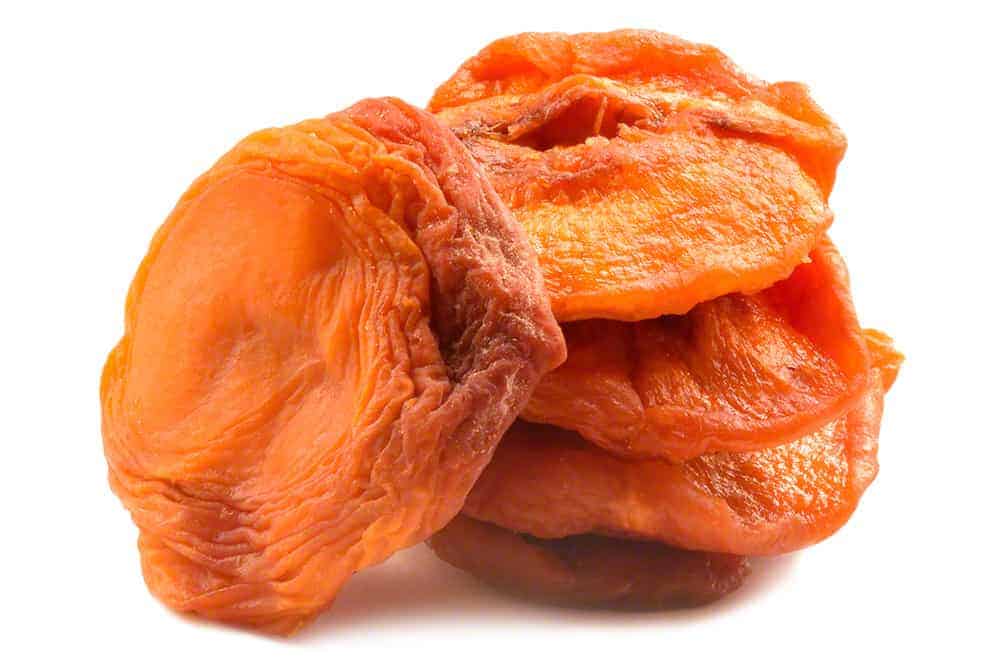
Dried Peaches
Like dried apricots, dried peaches (and nectarines) have a delicious sweet-sour flavor. They are best eaten as they are since cooking tends to destroy their intense flavor. They are also very good in winter compôtes when the serving is with dry apricots, dates, and pears. Just be careful not to cook them for too long.
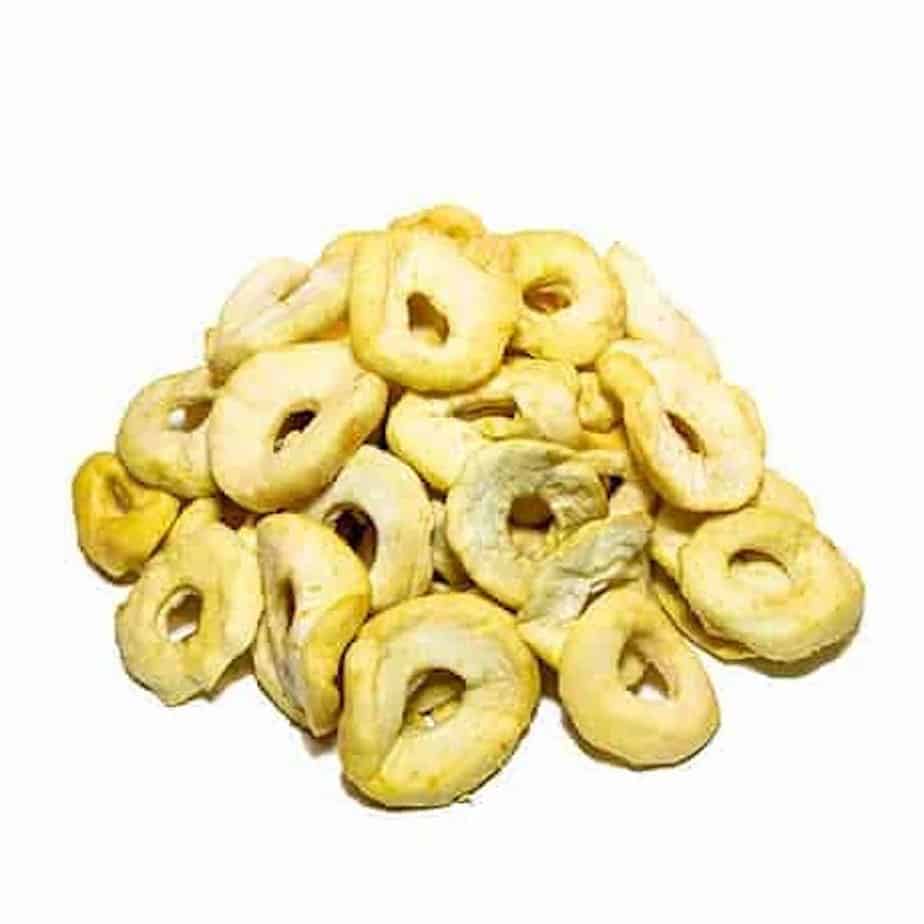
Dried Apples
These have a sweet, concentrated flavor. Eat them straight from the packet as a snack, add them to muesli (granola), or soak them in water, then cook them in sweet and savory dishes such as fruit compôtes, apple sauce, or casseroles. Dried apples are available commercially, but it is easy to dry your own, and you can choose your favorite varieties. Russet apples are particularly delicious when dried.
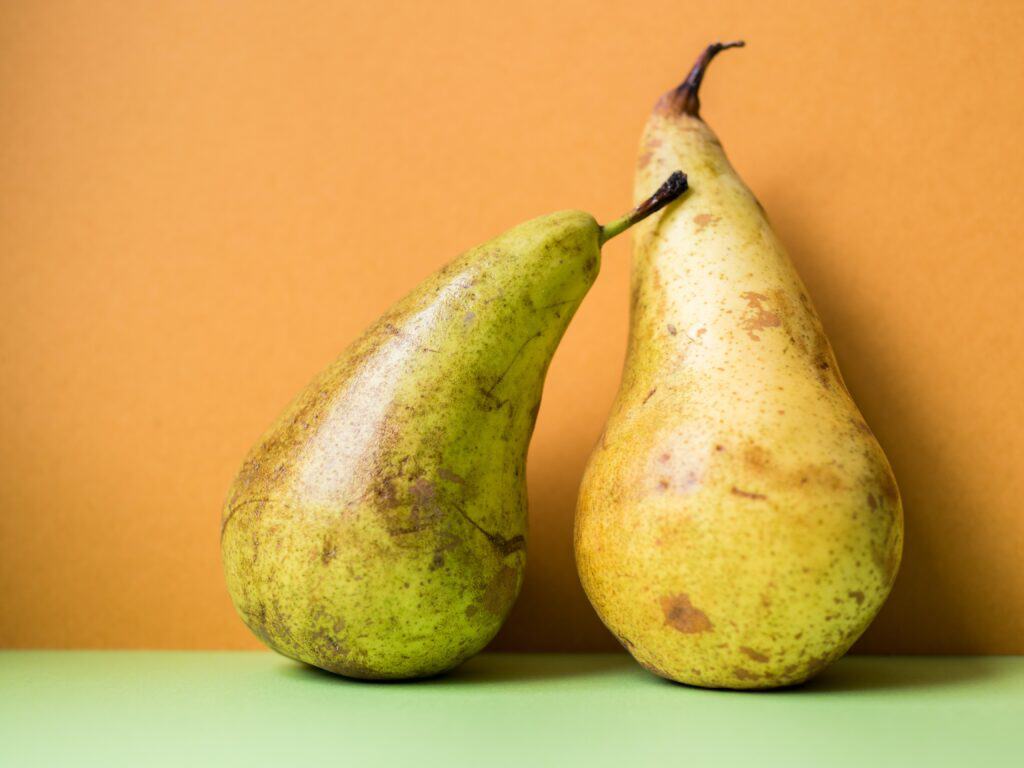
Dried Pears
Pears most often find use in winter fruit compôtes and savory casseroles. They complement venison and wild duck superbly. They are a delicate flavor addition when serving them raw and plain.
Dry Pears are readily available in stores and supermarkets, but preparing your own is easy.
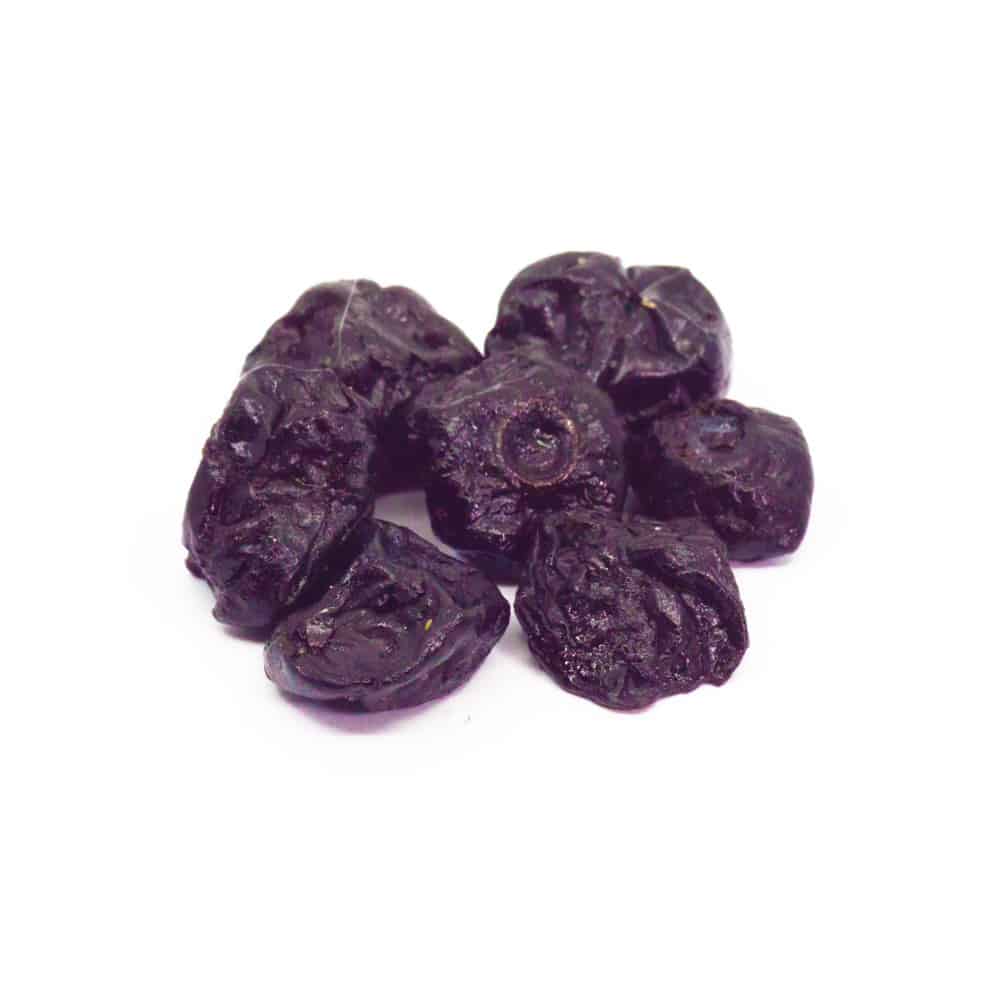
Dried Blueberries
Dried blueberries are surprisingly sweet and tasty and make a pleasant addition to homemade fruit cakes and muesli (granola). They are good toppings for dried fruit salads or breakfast cereal. They are available in specialist food stores, or buy dried blueberries online.
Dried Cranberries
These are much sweeter than fresh cranberries. Dried cranberries have a distinct flavor. You can eat them as they are or after soaking them in water or orange juice. Dried cranberries can be a great addition to muesli (granola) or as a topping in fresh salads. Also, good in steamed puddings, cakes, muffins, savory stuffings for poultry, and rich meat such as pork.
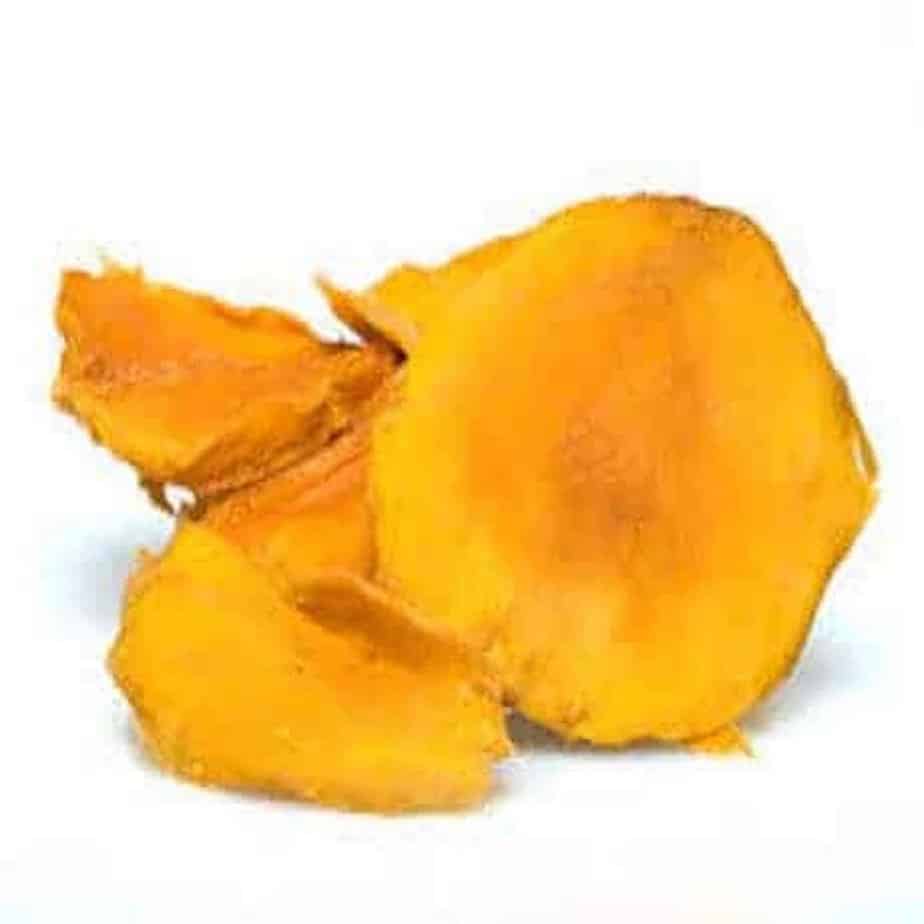
Dried mango
This can be bought in small pieces, long strips, or large half-fruits. The dried fruit is intensely sweet and chewy. Add to chutneys and relishes, mix with other dried fruits in cake and tea bread recipes, or enjoy as a snack.
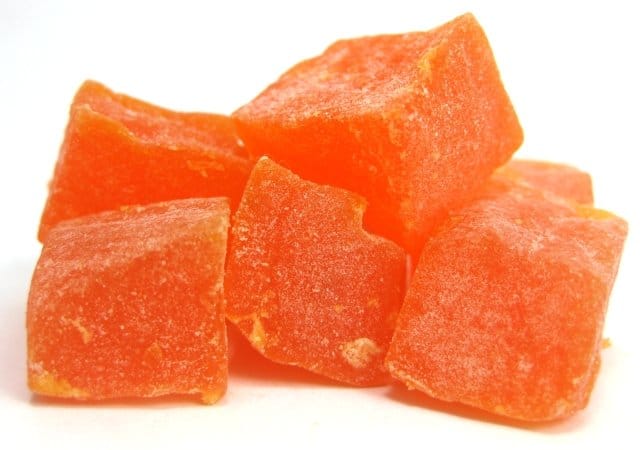
Dried Papaya
Usually available, cut into small cubes with a covering of sugar. Specifically, Dried papaya is mostly enjoyed as a confection rather than a cooking ingredient.
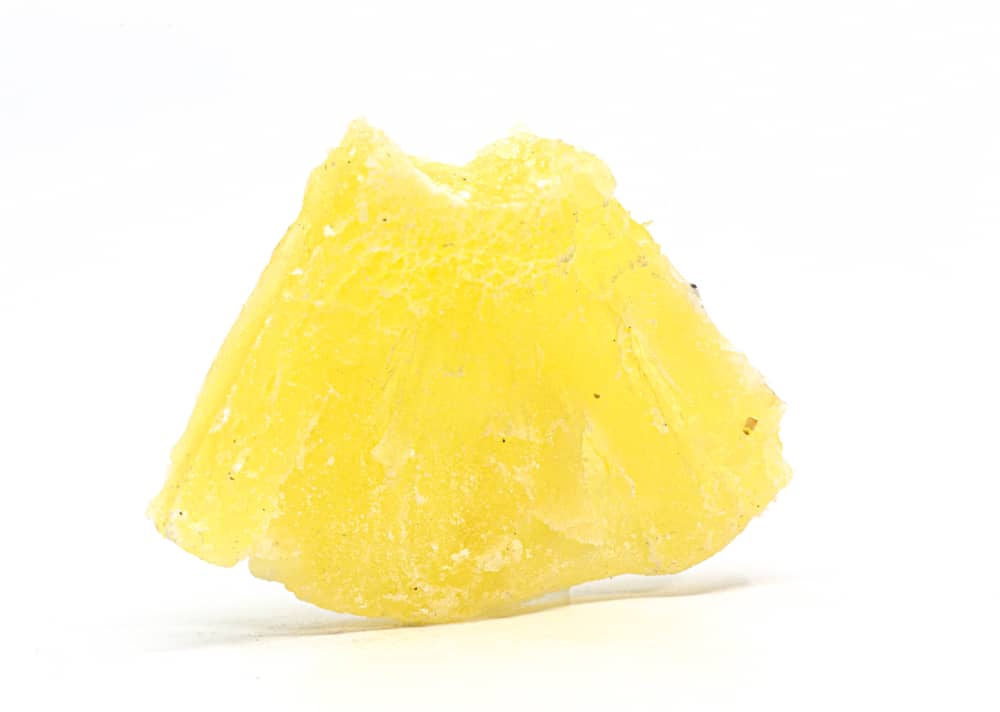
Dried Pineapple
This has an intense, almost fragrant, sweet flavor. Eat dried pineapple as it is, in a trail mix, or use it for making cakes and puddings.
Types Of Candied, Glazed, And Crystallized Fruit
The peel from oranges, lemons, and citrons are the most commonly candied fruit. The peel simmers in syrup until tender. The best-candied peel is available in large slices. They will have more flavor than the “cut” peel since the essential oils are more likely to retain. Crystallized and glacé fruit is usually candied fruit with a granular sugar coating or glazed with a sticky sugar syrup coating.
Crystallized ginger, pineapple, cherries, kumquats, clementines, and figs are among the many glacé and crystallized fruits available in supermarkets and stores, especially at Christmas, when used as decoration or eaten as sweets (candies).
Types Of Bottles Fruits
Throughout history, fruit has been bottled to preserve it over the winter months. Specifically, the fruit is preserved in sugar syrup, an alcoholic liqueur, or both. Some varieties of bottled fruits have become particularly popular. Maraschino cherries are often bottled with their stalks intact and are used for decoration, cooking, or as a sweet. Figs, apricots, peaches, and small clementines are popular bottled fruits. If bottling your own, pack the fruit into pretty glass jars as gifts.

